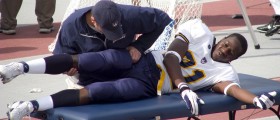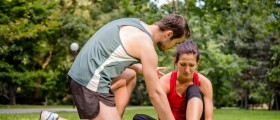
What is a sprain
A sprain is a rather common injury that particularly affects the athletes and people who work out a lot. It happens when a ligament stretches more than it should and possibly breaks. Sprains should not be confused with strains, which are muscle injuries that occur the same way sprains do.
Symptoms of a sprain
When a sprain occurs, the common symptoms include pain, swelling and bruising of the affected area. In cases of mild injuries, pain may occur only during the movement, but severe sprains hurt a lot even while resting. In case the ligament is torn, it is possible to hear a popping sound, which can be quite loud. The pain and discomfort resulting from a sprain can seriously affect the mobility and the ability to use the affected part of the body.
Treatment for sprains
In order to successfully recover from a sprain, it is important to memorize the acronym RICE, which stands for Rest, Ice, Compress and Elevate.
The affected part of the body should be allowed to rest completely and should be used as little as possible or not at all.
Ice packs wrapped in a clean towel should be applied for 20 minutes with 15 minutes pause, repeating this throughout the day.
The sprained joint should be wrapped with a bandage or an elastic band to prevent the swelling. In cases of excessive swelling, the bandages should be slightly loosened to prevent blood flow restrictions to the area.
Finally, the joint should be elevated. It is recommended to use a pillow or a cushion to support the affected joint, which should be held above the level of the heart. This allows the excess fluids to drain out and reduces the swelling.
Additional steps can be taken to alleviate the symptoms of the sprain and to speed up the recovery. Over-the-counter pain medication can be taken to ease the pain. It is best to use non-steroid anti-inflammatory drugs like Advil or Aleve, every four or five hours.
These steps are only effective if the ligament is not torn. A ligament tear is characterized by severe pain, instability, inability to use the affected joint, fever and other symptoms that last for more than two days. In this case it is recommended to see a doctor because home treatment will not be able to repair the damage. Depending on the severity, torn ligaments may need a cast, an immobilization boot or a sling, and in severe cases, surgery.

















Your thoughts on this
Loading...